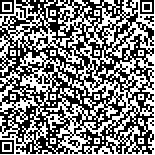| Quote
: |
罗江,杨惠民.颈动脉粥样硬化患者不同中医证型的血脂水平及血清RLP-C、sICAM-1、sVCAM-1含量差异分析研究[J].湖南中医药大学学报英文版,2017,37(3):317-320.[Click to copy
] |
|
| |
|
|
| This paper
:Browser 2162times Download 544times |
| 颈动脉粥样硬化患者不同中医证型的血脂水平及血清RLP-C、sICAM-1、sVCAM-1含量差异分析研究 |
| 罗江,杨惠民 |
| (北京中医药大学东直门医院, 北京 100700) |
| 摘要: |
| 目的 研究颈动脉粥样硬化患者不同中医证型的血脂水平及血清脂蛋白残粒(RLP-C)、细胞间黏附分子1(sICAM-1)和血管细胞黏附分子1(sVCAM-1)含量差异。方法 筛选2015年1月至2015年12月就诊于航天中心医院的颈动脉粥样硬化的患者90例设为中医组,同时筛选健康体检者90例设为正常组,取患者晨起空腹静脉血进行检测。观察颈动脉粥样硬化患者痰浊阻遏证、脾肾阳虚证、肝肾阴虚证、阴虚阳亢证以及气滞血瘀证情况,比较不同中医证候类型患者与正常组的血脂水平及其血清RLP-C、sICAM-1及sVCAM-1含量。结果 90例颈动脉粥样硬化患者中,54例为痰浊阻遏证,占总患病人数的60.00%,显著高于脾肾阳虚证、肝肾阴虚证、阴虚阳亢证以及气滞血瘀证患者,差异具有统计学意义(P<0.05);不同中医证候类型患者的血清TG、TC和LDL-C水平要高于正常组,而HDL-C含量要低于正常组,差异均具有统计学意义(P<0.05);此外,痰浊阻遏证患者的TG、TC、LDL-C含量高于其他中医证候型患者,而HDL-C含量低于其他中医证候型患者,差异均具有统计学意义(P<0.05);不同中医证候类型患者的血清RLP-C、sICAM-1及sVCAM-1水平要高于正常组,且痰浊阻遏证患者血清RLP-C、sICAM-1及sVCAM-1水平要高于其他中医证候型患者,差异均具有统计学意义(P<0.05)。结论 颈动脉粥样硬化患者主要为痰浊阻遏证候,且颈动脉粥样硬化患者与健康体检者的RLP-C及其相关指标差异显著,其中痰浊阻遏证患者最为明显。 |
| 关键词: 颈动脉粥样硬化 中医证型 脂蛋白残粒 sICAM-1 sVCAM-1 差异分析 |
| DOI:10.3969/j.issn.1674-070X.2017.03.023 |
| Received:June 30, 2016 |
| 基金项目: |
|
| Comparatively Analysis of Serum Lipid Levels and Serum RLP-C, sICAM-1 and sVCAM-1 Levels in Different TCM Syndrome Patients with Carotid Atherosclerosis |
| LUO Jiang,YANG Huimin |
| (Dongzhimen Hospital of Beijing University of Chinese Medicine, Beijing 100029, China) |
| Abstract: |
| Objective To detect the difference of serum lipid level and serum lipoprotein remnant (RLP-C), intercellular adhesion molecule 1 (sICAM-1) and vascular cell adhesion molecule 1 (sVCAM-1) in different TCM syndrome patients with carotid atherosclerosis. Methods Ninety patients with carotid atherosclerosis in the space center hospital from January 2015 to December 2015 were screened as TCM group, and 90 healthy persons as control group. Morning fasting venous blood was taken to detect the level of various components in serum. The symptoms of phlegm stasis syndrome, spleen kidney Yang deficiency syndrome, liver kidney Yin deficiency, Yin deficiency and Yang hyperactivity, Qi stagnation and blood stasis situation in patients with carotid atherosclerosis were observed. Then the lipid levels and RLP-C, sICAM-1 and sVCAM-1 levels of serum between patients with different TCM syndromes in TCM group and the control group were compared. Results 54 patients, 60% of cases in TCM group, were with phlegm stagnation syndrome, which were significantly higher than that of other three TCM syndrome (P<0.05); serum TG, TC and LDL-C in different TCM Syndrome patients were significantly higher than that of control group, while the content of HDL-C is significantly lower than control group (P<0.05). TG, TC and LDL-C in patients with phlegm stagnation were significantly higher than those in other TCM syndrome type patients, while the content of HDL-C is significantly lower than that of other TCM syndrome type patients (P<0.05). Levels of serum RLP-C, sICAM-1 and sVCAM-1 in different TCM syndrome type patients were significantly higher than those in control group, and levels of serum RLP-C, sICAM-1 and sVCAM-1 in phlegm stasis patients were significantly higher than those in other TCM syndrome type patients (P<0.05). Conclusion The carotid atherosclerosis patients are mainly with phlegm turbidity repression syndrome. RLP-C and its related indicators were significantly different in patients between carotid atherosclerosis and healthy, which are most significant in phlegm stasis patients. |
| Key words: carotid atherosclerosis TCM syndrome types RLP-C sICAM-1 s VCAM-1 variance analysis |
|

二维码(扫一下试试看!) |
|
|
|
|


